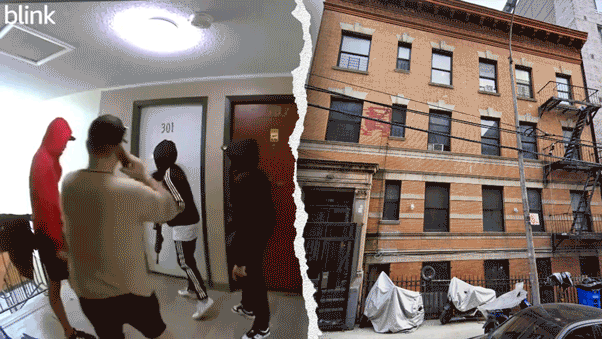Americans are increasingly flocking to the outermost edges of metropolitan areas - beyond the suburbs and into rapidly growing so-called 'exurbs'.
Exurbs are areas typically located 40 to 60 miles from city centers and are often appealing to families seeking more space, affordable homes and a quieter way of life.
The trend has transformed once-sleepy rural towns into thriving cultural communities with booming populations and housing markets.
Many of the most popular exurb hotspots are located in the South.
Anna, Texas, which is located 45 miles north of Dallas, for example, has seen its population soar by a third since 2020, becoming the fourth-fastest growing city in America.
Other popular exurbs include Fort Mill, South Carolina, near Charlotte and Lebanon, Tennessee, near Nashville, and Haines City, Polk County, Florida, which is nestled between Tampa and Orlando.
Once known only for its citrus groves, Polk County gained nearly 30,000 new residents last year, according to US Census Bureau data.
This made it one of the hottest migration destination in the entire country - and as a result, it has seen many of its famous citrus groves bulldozed for new housing developments.
Americans are ditching big cities and flocking to the outermost edges of metropolitan areas - beyond the suburbs and into rapidly growing 'exurbs' (Haines City, FL)
Hotspots include Anna, Texas, near Dallas; Fort Mill, South Carolina, on the outskirts of Charlotte; Lebanon, Tennessee , near Nashville; and Haines City in Polk County, Florida , nestled between Tampa and Orlando
The COVID-19 pandemic has played a significant role in the shift to the exurbs, with many people now able to make a living from home thanks to an increase in remote work opportunities.
This means they are no longer tied to big hubs where offices are based.
Skyrocketing housing costs in major cities have also pushed many families to seek more affordable and spacious alternatives.
Exurbs are particularly enticing to those eager to escape the urban grind and enjoy suburban comfort.
But the transformation is reshaping more than just landscapes.
It is changing the demographics and culture of these areas.
In Polk County, the Latino population has surged from one-fifth to more than a quarter in just five years.
The trend has been mostly driven by migration from Puerto Rico and New York.
Other communities across the South are seeing similar changes, with increasingly diverse populations redefining local traditions.
For some newcomers, the slower pace of life requires adjustment.
Marisol Ortega lives in Haines City, which is about 40 miles away from her job in Orlando - but she says it is worth the commute
Today, the former citrus hub has become the hottest migration destination in the entire United States - and many of the famous citrus groves have been bulldozed and turned into bustling housing developments
Exurbs, areas typically located 40 to 60 miles from city centers beyond the suburbs, have lured families seeking more space, affordable homes, and a quieter way of life - ultimately transforming once-sleepy rural towns into booming cultural communities (Pictured: Fort Mill, South Carolina)
But the migration comes with trade-offs, such as longer commutes and adjusting to new cultural norms.
One newcomer, Yeseria Suero, revealed the culture shock of moving from New York.
She is still getting used to the local traditions like early restaurant closures and even simply strangers chatting in grocery stores.
'My kids now say, 'Yes, ma'am,'' she joked.
Others are happy to embrace the trade-offs.
Marisol Ortega, who lives in Haines City, Florida, commutes an hour and a half to Orlando for work but treasures her tranquil home life.
'I love my job. I love what I do, but then I love coming back home, and it's more tranquil,' Ortega told the Associated Press.
Local resident Schuyler Crouch joked: 'The next exurb we are going to be living in is Oklahoma.'
Exurbs have outpaced city and suburb housing markets over the past decade, according to a report by StorageCafe (An old train station in Anna, Texas)
The surge has been driven by rising prices, limited inventories, and shifting homeowner preferences (Overhead view of community in Fort Mill, South Carolina)
A tongue-in-cheek sign referencing what someday might be the heart of the sprawling metro areas of Orlando and Tampa is seen, installed by a private landowner, in Polk City
The trend has increased at such a rate that exurbs have outpaced city and suburb housing markets over the past decade, according to a report by StorageCafe.
The surge has been driven by rising property prices, limited inventories, and shifting homeowner preferences.
Millennials - the largest home-buying generation - are leading the charge in exurb living, seeking larger homes, outdoor space, safer communities and better schools, the analysis showed.
'In a landscape characterized by flexible, work set ups in the post-pandemic search for more space, suburban, and exurban areas are growing faster than urban cores,' Doug Ressler, business intelligence manager at Yardi Matrix, explained.
'High-growth suburbs are emerging in areas with natural scenery, especially appealing to remote workers, as well as in places with high-performing schools, near medium or large metro areas with strong job markets, even when that means paying a premium on housing.'
The research showed that the number of available of properties in exurbs grew by an average of 15 percent over a ten-year period through 2022, while inventory increased by 14 percent in suburbs and 10 percent in principal cities.
During the same period, population growth in exurbs was 16 percent, outpacing the 13 percent growth in suburbs and 9 percent growth in principal cities.
'This suburban boom allows people to enjoy more living space and provides access to more diverse housing, but it also complicates efforts to bring employees back to urban offices', Matrix added.
'The full impact of this major migration shift remains to be seen, as suburban and exurban living continues to reshape residential and work environments.'
Meanwhile, analysis of Census Bureau data by SmartAsset showed that many of America's fastest-growing hotspots were suburbs or exurbs of bigger cities across the Sun Belt.
According to the analysis, millennials - the largest home-buying generation - are leading the charge in exurb living, seeking larger homes, outdoor space, safer communities, and better schools (Lenanon, TN)
Cities on the outskirts of Phoenix, for example, saw much higher rates of population growth than the Valley overall, according to Census estimates in May.
And in November, Buckeye was ranked America's fastest-growing city. Located 30 miles west of downtown Phoenix, it is now outpacing its bigger and better-known neighbor.
Buckeye's population grew by 46 per cent over five years to hit 108,900 people in 2023 the SmartAsset research showed .
That's still far short of Phoenix's 1.65 million people, but Buckeye mayor Eric Orsborn claimed the up-and-comer has more space to grow and 'will be bigger' in the end.

 By Daily Mail (U.S.) | Created at 2024-12-07 14:31:28 | Updated at 2024-12-23 10:35:06
2 weeks ago
By Daily Mail (U.S.) | Created at 2024-12-07 14:31:28 | Updated at 2024-12-23 10:35:06
2 weeks ago








